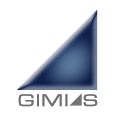GIMIAS
GIMIAS (Graphical Interface for Medical Image Analysis and Simulation) is a software framework designed to provide a workflow-oriented environment for solving advanced biomedical image computing and personalized simulation problems. Developed to facilitate the research and development of novel biomedical applications, GIMIAS is particularly focused on integrating medical imaging data with computational models and simulations to support clinical decision-making and therapy planning.
Overview[edit | edit source]
GIMIAS is an open-source platform that combines the power of medical imaging, computational modeling, simulation, and software development tools in a single environment. It is designed to be modular, allowing for the easy integration of new functionalities and the development of custom plugins to extend its capabilities. The framework is developed in C++ and uses widely adopted libraries such as VTK (Visualization Toolkit) for 3D visualization and ITK (Insight Segmentation and Registration Toolkit) for image processing.
Features[edit | edit source]
GIMIAS provides a wide range of features to support the development and deployment of biomedical applications. These include:
- Advanced 3D visualization tools for medical images and simulation results.
- Support for multi-modal image analysis, including MRI, CT, and ultrasound imaging.
- Tools for image segmentation, registration, and quantitative analysis.
- Integration with computational modeling and simulation software for personalized medicine applications.
- A plugin architecture for extending the platform's capabilities and integrating new tools.
- User-friendly graphical interface designed for clinical researchers and engineers.
Applications[edit | edit source]
The flexibility and modular design of GIMIAS have enabled its use in a variety of biomedical research and clinical application areas, including but not limited to:
- Cardiovascular diseases: Modeling and simulation of heart function and blood flow.
- Neuroimaging: Analysis and visualization of brain images for research and diagnosis of neurological disorders.
- Orthopedics: Simulation of bone mechanics and surgical planning.
- Oncology: Image-based modeling and simulation for tumor growth and treatment response prediction.
Development and Community[edit | edit source]
GIMIAS is developed by a collaborative community of researchers, engineers, and clinicians. The project encourages contributions from the community, including the development of new plugins, improvement of existing features, and dissemination of research findings using the platform. The GIMIAS project also provides documentation and tutorials to support new users and developers.
Conclusion[edit | edit source]
GIMIAS stands out as a powerful and flexible software framework for the integration of medical imaging data and computational models. Its open-source nature and modular design make it an attractive tool for researchers and clinicians working on the cutting edge of personalized medicine and biomedical research.
Search WikiMD
Ad.Tired of being Overweight? Try W8MD's physician weight loss program.
Semaglutide (Ozempic / Wegovy and Tirzepatide (Mounjaro / Zepbound) available.
Advertise on WikiMD
|
WikiMD's Wellness Encyclopedia |
| Let Food Be Thy Medicine Medicine Thy Food - Hippocrates |
Translate this page: - East Asian
中文,
日本,
한국어,
South Asian
हिन्दी,
தமிழ்,
తెలుగు,
Urdu,
ಕನ್ನಡ,
Southeast Asian
Indonesian,
Vietnamese,
Thai,
မြန်မာဘာသာ,
বাংলা
European
español,
Deutsch,
français,
Greek,
português do Brasil,
polski,
română,
русский,
Nederlands,
norsk,
svenska,
suomi,
Italian
Middle Eastern & African
عربى,
Turkish,
Persian,
Hebrew,
Afrikaans,
isiZulu,
Kiswahili,
Other
Bulgarian,
Hungarian,
Czech,
Swedish,
മലയാളം,
मराठी,
ਪੰਜਾਬੀ,
ગુજરાતી,
Portuguese,
Ukrainian
Medical Disclaimer: WikiMD is not a substitute for professional medical advice. The information on WikiMD is provided as an information resource only, may be incorrect, outdated or misleading, and is not to be used or relied on for any diagnostic or treatment purposes. Please consult your health care provider before making any healthcare decisions or for guidance about a specific medical condition. WikiMD expressly disclaims responsibility, and shall have no liability, for any damages, loss, injury, or liability whatsoever suffered as a result of your reliance on the information contained in this site. By visiting this site you agree to the foregoing terms and conditions, which may from time to time be changed or supplemented by WikiMD. If you do not agree to the foregoing terms and conditions, you should not enter or use this site. See full disclaimer.
Credits:Most images are courtesy of Wikimedia commons, and templates, categories Wikipedia, licensed under CC BY SA or similar.
Contributors: Prab R. Tumpati, MD

